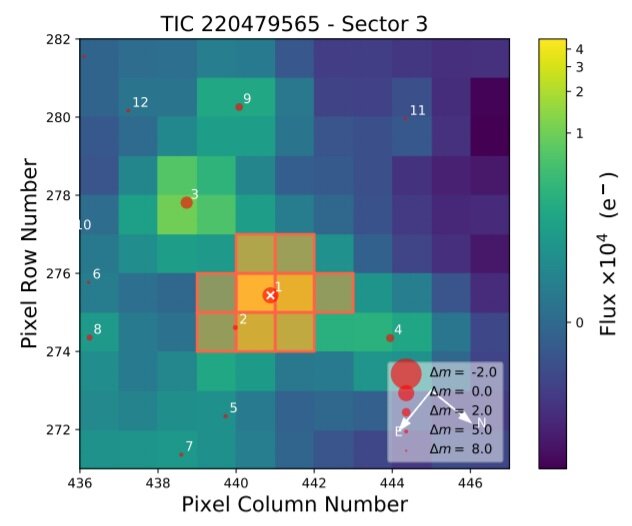
An article accepted for publication in the journal “Astronomy & Astrophysics” reports the confirmation by a team of researchers led by Marion Cointepas of the exoplanet TOI-269 b, a sub-Neptune orbiting a red dwarf discovered thanks to NASA’s TESS space telescope. It’s a warm Sub-Neptune because its year only lasts 3.7 Earth days, as it’s very close to its star. It’s not the first case of that type, but this is interesting because estimates of its characteristics indicate that it’s close to the boundaries between sub-Neptunes and super-Earths. The loss of the atmosphere with the transformation from sub-Neptune to super-Earth is a case studied only in theory and TOI-269 b could provide useful information to understand this process.
About 186 light-years from Earth, the star TOI-269, also known as TIC 220479565, is a red dwarf whose mass and size are about 40% of the Sun’s. It’s a very common type of star, and TOI-269 became interesting after NASA’s TESS space telescope, launched on April 18, 2018, discovered a candidate exoplanet around it (Image Cointepas et al. All rights reserved). The team led by Marion Cointepas used follow-up observations conducted with various ground-based telescopes including the ExTrA (Exoplanets in Transits and their Atmospheres) facility and the HARPS spectrograph, both at the La Silla Observatory in Chile, to confirm the existence of the exoplanet that was cataloged as TOI-269 b.
The observations indicate that the exoplanet TOI-269 b has a radius that is about 2.77 times the Earth’s for a mass that is about 8.8 times the Earth’s. Its density is much lower than that of super-Earths but is close to the boundary between the two types of planets. Planetological models indicate that a gas planet could lose most of its atmosphere and become a super-Earth but it’s difficult to find candidates that might be in the middle of that transformation.
A peculiarity of the exoplanet TOI-269 b is that its orbit is very eccentric, in the sense that it has a particularly elongated ellipse, for a planet so close to its star. This suggests that it migrated relatively recently from a more distant location as a result of interactions with other nearby planets, not identified by research.
Warm and hot Neptunes and Sub-Neptunes are interesting because proximity to their stars leads to a loss of atmosphere that must be measured over very long periods to prove that a radical transformation can take place. The TOI-269 system is probably a few billion years old and this means that star systems can continue to evolve for very long periods.
A possible link with the transformation of Neptune and sub-Neptune planets is the so-called Neptunian desert, a region close to stars where it’s very rare to discover a gas planet. From this point of view, an interesting case is TOI-220 b, another warm sub-Neptune discovered thanks to the TESS space telescope whose confirmation is reported in an article accepted for publication in the journal “Monthly Notices of the Royal Astronomical Society”.
The exoplanet TOI-220 b has a radius that is about 3 times the Earth’s for a mass that is about 13.8 times the Earth’s. Its star is a little smaller and colder than the Sun so, with its year lasting 10.7 Earth days, the temperature on its surface could exceed 500° Celsius.
These warm sub-Neptune exoplanets are too close to their stars to become Earth-like, and if anything they can become Venus-like or Mercury-like. Astronomical studies on planetary migrations and on the possible transformations from gas to rocky planets are still interesting to understand where planetary evolution can lead, especially in systems with stars smaller than the Sun, which can live for many billions of years.

